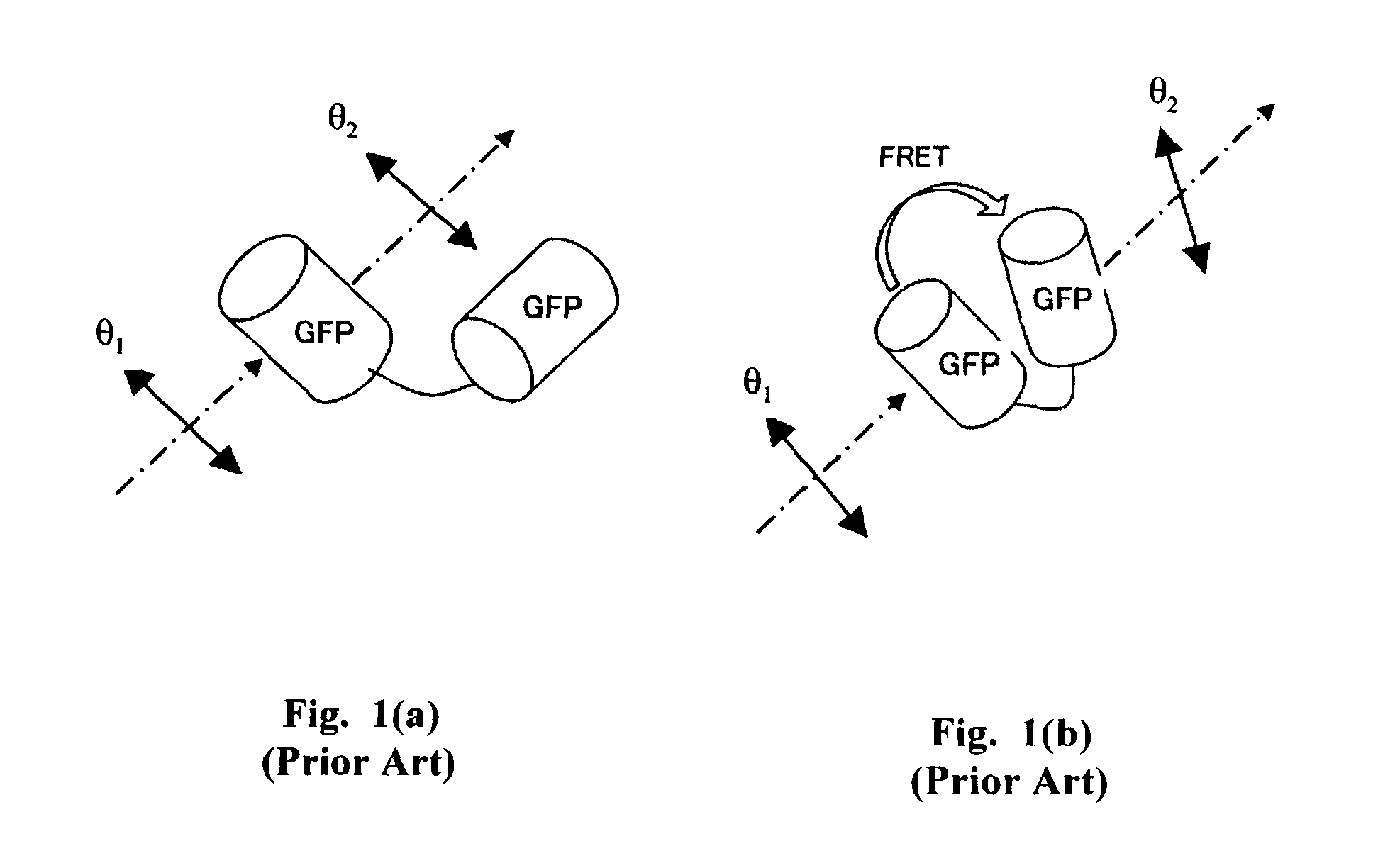Laser scanning microscope that includes a scanning device and at least one controllable optical element that controls the polarization plane of light incident onto a sample, and method of use
a scanning microscope and scanning device technology, applied in the field of laser scanning microscopes, can solve the problems of polarization anisotropy, inability to obtain satisfactory observations, and inability to use wavelength differences to obtain homo-fret observations, and achieve the effect of high sensitivity and accuracy in detecting polarization anisotropy
- Summary
- Abstract
- Description
- Claims
- Application Information
AI Technical Summary
Benefits of technology
Problems solved by technology
Method used
Image
Examples
embodiment 1
[0049]FIG. 6 is a schematic illustration showing a use of an AOTF 12 in the laser scanning microscope of the present invention. In the present invention, the AOTF 12 (when energized) divides the incident light from the laser 9 into a zero-order diffracted light beam (not illustrated, but that travels along same optical path as a transmitted beam 26 that emerges from the AOTF 12 when the AOTF 12 is not energized) and a first-order diffracted light beam 27. These beams are then directed to fiber coupling mechanisms 13, 13 that connect to fiber optic transmission media 7, 7 respectively. In other words, both the zero-order diffracted light beam and the transmitted beam 26 are used in the present invention, whereas they are not used in prior art laser scanning microscopes.
[0050]The transmitted light beam 26 (that emerges from the AOTF 12 when it is not energized) and the first-order diffracted light beam 27 (produced when the AOTF is energized) are linearly polarized with vibration plan...
embodiment 2
[0053]FIG. 8 is a schematic illustration for explaining another structure relating to the AOTF 12 in the laser scanning microscope of the present invention. In Embodiment 2, the incident light from the laser 9 is split into a transmitted light beam 26 when the AOTF is not energized and a first-order diffracted light beam 27 when the AOTF is energized, which are merged before entering the fiber coupling mechanism 13. In the embodiment shown, a combination of a half mirror 28 and a mirror 29 is used to merge these two light beams so that they travel on a common light path alternately and sequentially.
[0054]FIG. 9 is a schematic diagram showing the internal structure of a laser scanning microscope in which the structure relating to the AOTF 12 shown in FIG. 8 is incorporated. As seen from the comparison between FIGS. 9 and 4, the only difference between the two structures resides in the internal structure of the laser unit 6.
[0055]In the structure of this embodiment, lights from the la...
embodiment 3
[0056]FIG. 10 is a schematic illustration for explaining another use of an AOTF 12 in the laser scanning microscope of the present invention. An AOTF is used to control the amount of light in the prior art laser scanning microscope. In this embodiment, it is used to control the intensity of the light and to switch the directions of the vibration planes of linearly polarized light beams that sequentially and alternately irradiate a sample.
[0057]Upon entering the AOTF 12, the light from the laser 9 is split into two components that travel within the crystalline structure of the ATOF 12. As described in earlier embodiments, by switching on and off the power to the AOTF 12, the AOTF 12 functions to split light emerging from the AOTF into a transmitted light beam that travels along the path of the zero-order diffracted beam 26 and a first-order diffracted light beam 27. Then, either one of these two light beams is introduced into a fiber coupling mechanism 13. Meanwhile, the other of the...
PUM
 Login to View More
Login to View More Abstract
Description
Claims
Application Information
 Login to View More
Login to View More - R&D
- Intellectual Property
- Life Sciences
- Materials
- Tech Scout
- Unparalleled Data Quality
- Higher Quality Content
- 60% Fewer Hallucinations
Browse by: Latest US Patents, China's latest patents, Technical Efficacy Thesaurus, Application Domain, Technology Topic, Popular Technical Reports.
© 2025 PatSnap. All rights reserved.Legal|Privacy policy|Modern Slavery Act Transparency Statement|Sitemap|About US| Contact US: help@patsnap.com



